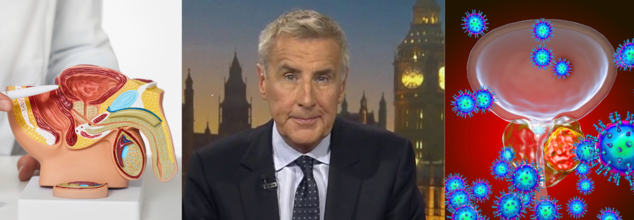- Health Conditions A-Z
- Health & Wellness
- Nutrition
- Fitness
- Health News
- Ayurveda
- Videos
- Medicine A-Z
- Parenting
- Web Stories
Gen Z’s Toxic Love Affair With High-Strength Nicotine Is Putting 1.2 Million Lives At Risk

Credit: Canva
Gen Z's newest fixation isn't some passing wellness fad or trending TikTok challenge—it's a dangerous romance with high-nicotine pouches that experts say is careening into public health catastrophe. Vapes drop from favor as cigarettes once again gain popularity, and products such as ZYNs—nicotine pouches that are portable, convenient, and unnervingly powerful—are quickly becoming the next big thing among teens. With over 1,500 seizures of illicit nicotine pouches reported in areas such as Oxfordshire, Berkshire, and Dorset in the UK alone, health officials are raising an alarm.
These packets, usually imported and sold with foreign-language labeling, slip past proper control. Even though they are subject to General Product Safety Regulations, most do not even include simple English safety warnings. Some even misleadingly claim ridiculously high doses—up to 150mg of nicotine—rendering them not only deceptive but also dangerous to unsuspecting consumers.
What is most troubling is the development of a flourishing black market. With no strength controls or age limits, supercharged pouches are readily available to youth through corner stores or websites. Teens are attracted not only by the hype but by the excitement—purchasing products with novelty packaging, candy-like flavors, and video game-like names.
The game of marketing is cunning: companies know that "strength sells." While large manufacturers limit nicotine strength to 20mg per pouch, unknown, frequently illegal brands are promoting much greater strengths—30mg and more—driving a new addiction cycle. "If the pouch contains no instruction or safety information in English, users will not understand how to dose it safely," argues Caroline Cerny, Action on Smoking and Health (ASH) Deputy Chief Executive. The outcome? An increasing number of adolescents reporting symptoms such as nausea, vomiting, dizziness, headaches, and racing hearts—a condition more commonly referred to as the "niccy rush."
Is GenZ a Generation Hooked on Highs?
This is not a new phenomenon. Evidence in recent years already indicated a high-strength vape use among 18- to 24-year-olds was increasing, with usage of the most potent (20mg/ml) varieties increasing from just below 4% to more than 50% within three years. These are items that equate to one or two packs of cigarettes—reached via delivery through devices that were once erroneously marketed as safer alternatives.
As disposable vapes such as the 3,500-puff Elux Legend saturated the UK high streets, adolescents increasingly turned to high-nicotine puffs, even admitting to knowingly buying illicit products. A 2023 survey of online retailer Haypp found that almost one in three young users would happily purchase black-market vapes. The same hunger is now driving the growth of nicotine pouches.
Role of Education—Or the Lack Thereof?
So why are so many teenagers leaping headlong into a habit so obviously dangerous? Experts attribute this to a huge gap in harm education. "There's no coherent messaging about the dangers of nicotine pouches," says Ivan Ezquerra Romano, harm reduction expert and Drugsand.me founder. "Younger generations heard that smoking kills, but when it comes to newer options like vapes and pouches, the message hasn't caught up."
This disparity makes Gen Z vulnerable. Enticed by colorful packaging and internet-age branding, they tend to underestimate the repercussions. Unlike cigarettes, the health dangers of nicotine pouches are still under-studied, so a false sense of security takes hold. What most people don't know is that nicotine itself is a potent psychoactive drug—one that can drive anxiety, addiction, and chronic cardiovascular problems.
The physical hazards are just half the story. CVS Health just released the results of a national survey indicating that 85% of Gen Z in the United States feel that there's a teen nicotine epidemic, and 9 in 10 feel that these products can exacerbate mental health issues. They're right—research indicates that nicotine use can increase symptoms of depression and anxiety, especially among adolescents whose brains are still maturing.
What is especially insidious is how nicotine quietly reprograms the brain, generating patterns of dependency that are hard to undo. For a generation already struggling with increasing mental health issues, nicotine's effect cannot be exaggerated.
The international scenario is even darker. A modelling research by the World Health Organization's International Agency for Research on Cancer (IARC), released in The Lancet Public Health, estimated that excluding tobacco sales to individuals born between 2006 and 2010 would prevent 1.2 million lung cancer deaths between 2095. That represents almost 40% of lung cancer deaths expected in this age group.
Smoking is responsible for 85% of all lung cancer diagnoses—the most fatal type of cancer globally. Without extreme measures, almost 3 million individuals born in the same period might lose their lives due to lung cancer alone. Female-orientated tobacco promotion has been an important factor in producing these statistics, with Western Europe experiencing the highest number of potential lives saved among females, and the highest for males in Eastern Europe.
The latest nicotine epidemic—hiding behind shiny, high-tech packaging—is a time bomb waiting to explode. If world leaders don't act to control these products, educate youth, and limit marketing practices aimed at kids, we will see a return to levels of addiction not experienced since the peak of cigarette use.
The answer isn't simply prohibiting products; it's more intelligent policy. From transparent labeling legislation and potency limits to culturally sensitive education efforts and affordable cessation services, it's time we take the same seriousness with nicotine pouches as we did with cigarettes.
Because this isn't a Gen Z issue—it's a global health emergency in the making.
Ex-Sky TV Presenter Dermot Murnaghan Reveals Stage 4 Prostate Cancer

Credits: Canva and SKY News
Veteran journalist and broadcaster Dermot Murnaghan has revealed that he has been diagnosed with stage 4 prostate cancer.
The 67-year-old, known for anchoring major news shows across ITV, BBC, and Sky News, shared the news on social media. He also added that he is currently feeling well and responding positively to treatment.
Murnaghan wrote on X (formerly Twitter), “Some personal news… I’ve been diagnosed with Stage IV advanced prostate cancer.”
He added, “I’m fortunate to have a simply outstanding medical team looking after me, who I can’t thank enough—they are administering the best possible care with expertise, compassion and sensitivity.” He also shared his gratitude for the "monumental love and support" he’s received from his wife, family, and close friends.
Drawing From Personal Experiences To Raise Awareness
Murnaghan used his post to raise awareness about prostate cancer and called on men, especially those over 50 or in high-risk groups, to get themselves tested. “Early detection is crucial,” he wrote. “And be aware, this disease can sometimes progress rapidly without obvious symptoms.” He also voiced his support for routine prostate cancer screening through the NHS.
Despite his diagnosis, Murnaghan said he hopes to take part in the upcoming Tour De 4 charity bike ride in Glasgow this September. The event is organized by Olympic cycling champion Sir Chris Hoy, who also has prostate cancer. The ride aims to challenge public perceptions about living with stage four cancer and show that many people continue to lead active, fulfilling lives even while undergoing treatment.
Life of Dermot Murnaghan
Dermot Murnaghan has had a long and respected career in British media. He began his journalism journey at Channel 4 News and later anchored ITV’s The Big Story, News at Ten, Evening News, and Nightly News through the 1990s and early 2000s. In 2002, he moved to the BBC, where he became a familiar face on BBC Breakfast, the Six O'Clock News, and the Ten O’Clock News. From 2003 to 2014, he hosted the popular BBC quiz show Eggheads. He joined Sky News in 2007, where he remained a leading anchor until 2023.
In addition to his news broadcasting, Murnaghan has presented true-crime documentary series such as Crimes That Shook Britain and Killer Britain. He also currently hosts a podcast called Legends of News, where he speaks with experienced journalists about some of the most significant stories they've covered.
What is Prostate Cancer?
Prostate cancer affects the prostate gland, a small walnut-sized part of the male reproductive system located just below the bladder. It is most common in older men, particularly those over 75. Risk factors include age, family history, and ethnicity, with black men facing a higher risk.
Symptoms can include frequent urination (especially at night), difficulty starting or stopping urination, weak urine flow, and blood in urine or semen. However, some cases progress without noticeable symptoms.
Stage 4 prostate cancer means the disease has spread to other parts of the body. While outcomes vary, around half of men diagnosed at this stage live for five years or more, according to Cancer Research UK.
Murnaghan’s message is clear: awareness and early testing can make all the difference.
What Is The Controversial 'Barbie Surgery'? How Labiaplasty Surgery Affects Women's Sex Life

Credits: Canva
Labiaplasty, or "Barbie surgery," is still one of the most controversial of today's cosmetic surgeries. Although it may bring relief to women who are having physical pain or appearance-related insecurities, it's not a cure for every self-esteem or sexual issue.
We as a society need to deconstruct damaging beauty standards and make the variability of women's anatomy mainstream. Physicians, researchers, and media commentators have a responsibility to empower women—not with assurances of perfection, but with truthful information and respect for their autonomy.
In a world where looks are everything and social media perpetuates edited perfection, it's little wonder that increasing numbers of women are seeking cosmetic procedures to enhance their own self-esteem. Of these, one operation has evoked more controversy than most: labiaplasty, or, as it has been sensationally referred to, the "Barbie surgery." So what is the procedure, why are increasingly women having it, and how does it actually affect their sex life and mental health?
What is Labiaplasty?
Labiaplasty is a type of cosmetic vulvar surgery that reduces the size of the labia minora, the inner lips of the vulva. Frequently misunderstood as the more general term "vaginal rejuvenation," labiaplasty is technically a surgical procedure, in contrast to energy-based treatments such as laser or radiofrequency, which are purported to tighten the vagina or provide relief for dryness.
Though its popularity is undeniable, so is the taboo. The mere mention of female genitalia, particularly in a medical setting, remains uncomfortable to this day. For this reason, full knowledge and open discussion about labiaplasty are nonexistent, leaving women misinformed or with utopian expectations.
Why Are Women Getting 'Barbie Surgery' Done?
Between 2001 and 2013, labiaplasty surgeries in Australia alone doubled more than twice—640 to 1,605 among public patients. This does not account for a substantial number done at private clinics, where national statistics are still not available. Contrary to popular misconceptions, it's not teen girls but women between the ages of 25 to 34 who most commonly undergo the surgery.
The "Barbie surgery" gets its name from the cosmetic ideal that inner labia must not extend beyond the outer labia—such as a Barbie doll's anatomically smooth shape. This has been greatly influenced by internet pictures and pornography, which tend to show only a single, unrealistic model of what female genitalia "should" be. Some women have taken these ideals to the point of pain and distress.
Why Women Opt for Labiaplasty?
There are different reasons for labiaplasty, while some women are in pain during running or sex. Yet, the majority have it done because they don't like the look of their genitals. Social, media, and even partner-induced expectations contribute to the idea that there's a "right" way a vulva should appear.
Women want labiaplasty to enhance their self-esteem as well as sexual confidence. Cosmetic surgery clinics exploit this expectation by advertising labiaplasty as a solution to achieving enhanced relationships as well as sexual fulfillment.
What Science Says About Sexual and Psychological Outcomes of Labiaplasty
A recent study appearing in Plastic and Reconstructive Surgery illuminates labiaplasty outcomes, and the results are both enlightening and sobering. The study tracked women who had labiaplasty and measured changes in psychological well-being before and after surgery.
Whereas most of them stated they were more satisfied with the way their genitals looked, there were no significant differences in general self-esteem or sexual self-confidence. In short, labiaplasty made them feel more confident about what they looked like—but not who they were or how they felt when they were intimate.
Unrealistic Expectations and Psychological Risks
One of the most striking findings from the study was that women experiencing psychological distress, such as depression or anxiety, or those in active intimate relationships, were more likely to be dissatisfied with the outcome. This suggests that some women may pursue labiaplasty with hopes of it resolving deeper emotional or relationship issues—expectations the surgery simply cannot fulfill.
This highlights the necessity of pre-surgical psychological assessment. Physicians need to dig deeper into the motivation of a patient and ensure that it is based on realistic results. For females who are undergoing emotional or relational pain, the first option may be more appropriately addressed in psychological therapy.
What is the Surgical Procedure of Labiaplasty?
There are various methods of labiaplasty, each specific to unique anatomy and cosmetic objectives. The most popular of these are:
Trim Technique: The most conventional and common method, wherein the redundant labial tissue is trimmed and stitched, making the face appear more symmetrical.
Wedge Technique: Is removal of a wedge of tissue from the thickest portion of the labia minora. It maintains the natural edge and gives a more natural post-operative appearance.
They need to see board-certified plastic surgeons who deal with labiaplasty to choose the procedure that best suits their goals and anatomy.
How Media, Misconceptions, and the Cultural Pressure Affects The Decision?
Media representation of the female genitalia has contributed immensely to labiaplasty rates. Pictures in pornography, airbrushed Instagram photos, and even some medical pictures tend to present an unachievable narrow, uniform ideal of genital appearance. This ideal is as far as possible from reality—female genitalia exist in a wide variety of shapes, sizes, and colors.
But such unrealistic pictures can sow seeds of insecurity. Women have reported feeling embarrassed, ashamed, or even inadequate about how their vulva appears in comparison to these pictures. In other instances, comments from partners fuel the problem, providing a strong incentive for surgery.
Can It Improve Your Sex Life?
Although the increasing link between labiaplasty and enhanced sexual experience gains a louder voice, studies contradict. Some women become less embarrassed after surgery, but no reliable evidence supports that the procedure fosters sexual satisfaction or orgasmic response.
The irony is that one of the leading reasons why women opt for labiaplasty—enhancing their sex life—is not scientifically supported. Rather, the main advantage of the surgery is for the alleviation of discomfort and enhanced appearance satisfaction.
The discussion on labiaplasty needs to move away from one of embarrassment or hyperbolic marketing and towards a realistic, medically grounded one. Women need to be completely informed about what the procedure can and cannot do. It's important to recognize that labiaplasty is not a solution for emotional insecurities, relationship issues, or inner issues related to self-worth.
With additional study, providers can further aid women by figuring out who could be helped by surgery—and who would be helped by therapy as an initial step.
In the end, a woman's confidence should not result from how well her body resembles an imaginary doll, but from the knowledge, encouragement, and self-acceptance that go beyond appearances.
These 3 Types Of Naps Shorten Your Lifespan, According To Researchers

(Credit-Canva)
Slept late because you partied too hard on the weekend? Found yourself unable to sleep because you were scrolling your phone till 3 am on a work-night? These things happen to the best of us, whether it is because you slept late, or slept too long, leaving your sleep pattern askew. We are all familiar with the feeling. Being so tired that you fall asleep the moment you come home, hoping to take a nap. However, is this nap costing you your health?
While napping after a long day of work may seem appealing, it could be inching you closer to an early grave.
A new study suggests that when you nap and how long you nap during the day might be linked to your risk of death. This is especially true for adults in their middle to older years. Researchers looked at data from wearable fitness trackers to understand these napping patterns. They found that specific ways of napping were connected to a higher risk of dying among older adults.
What the Study Found
Researchers used data from wearable activity trackers worn by nearly 87,000 adults, mostly around age 63. These devices tracked their sleep and activity patterns for a week. Over 11 years, thousands of these participants passed away. The research found a link between a higher risk of death and three things:
- taking longer naps
- napping at different lengths each day
- napping often around midday or early afternoon.
This research is important because it used real data from trackers, which is more accurate than just asking people about their naps from memory.
Does Napping Cause Health Problems?
It's important to know that this study doesn't prove naps cause death. It only shows a connection. This research is still new and hasn't been fully checked by other experts. It also might not apply to everyone. However, experts say the study offers strong evidence. It suggests that if someone naps a lot or at odd times, it might be a sign that they have an underlying health condition that's making them tired.
Connection Between Napping and Mortality
It's important to understand that this study doesn't prove naps cause death. Instead, experts think the link is more about why people are napping. For example, hidden health problems like sleep apnea (which messes up night sleep) or illnesses that cause a lot of tiredness, like heart disease, could be the real culprits. These conditions might make someone nap more and also increase their risk of death. It's also possible that very long or irregular naps might upset your body's natural clock, potentially affecting things like inflammation and heart health.
Should You Stop Napping?
There's no need to completely stop napping, especially if you are a shift worker or truly sleep-deprived. Scientists are still learning about this connection. However, for most people, it's a good idea to aim for certain nap habits:
Keep naps short: Naps less than 30 minutes are often best to help you feel refreshed without feeling groggy.
Nap earlier in the day: Napping earlier can help prevent your daytime sleep from interfering with your ability to fall asleep at night.
If you find yourself taking very long naps or needing regular naps throughout the day, especially if you still feel tired, it's a good idea to talk to your doctor. They might want to check for underlying health problems or recommend an evaluation for a sleep disorder.
Tips To Avoid Napping
- Stick to a consistent sleep schedule.
- Spend time outdoors in natural sunlight, particularly in the morning.
- Get regular physical activity.
- Limit your intake of caffeine and alcohol.
- Establish a relaxing bedtime routine.
- Eat regular, healthy meals and snacks.
- Practice relaxation techniques like deep breathing or meditation to reduce stress.
© 2024 Bennett, Coleman & Company Limited

